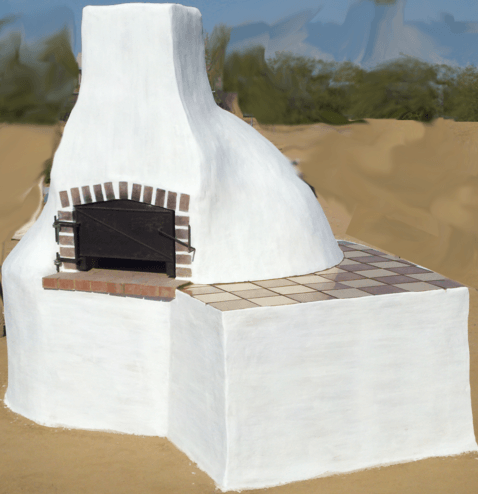My original plan was to apply one coat of whitewash per day for four or five days but, I thought about it and double checked some of my references and decided to wait a few days between each coat. This will allow the calcium carbonate crystals time to begin forming and make for a solid waterproof surface.
I should also make mention of why I chose to use such a basic whitewash mix. Most recipes call for the addition salt, flour paste, milk or glue. I chose not to use any of these for the following reasons. Salt will slowly dissolve the sand, stone or cement and I didn’t want to deal with that. The flour paste needs the salt to keep from molding and since I didn’t want to use the salt then the flour paste was out. The milk and glue was a simple choice, I didn’t have enough so I decided not to use them. Besides I want the whitewash to be able to accept a color coat when the kitchen is done and if I used the other ingredients the color coat may not adhere well.
Since I decided to wait a few days between coats I decided to work on cleaning up the exposed bricks that I had gotten the whitewash on. I used a fine wire brush and cleaned off the bricks trying not to remove or damage the grout between the bricks. Once I did that I used a small paint brush to repaint the grout between the bricks with the whitewash.
I also spent some time working on the counter. I thinned down some boiled linseed oil with mineral spirits and used the small paint brush to apply the linseed oil to the grout between the tiles. I was able to get three coats on the grout to soak in. I’ll add more coats of oil tomorrow. I did have to smooth out the oil that flowed on to the tiles. You can see in the picture below how the counter is shiny and you can see the reflection of the oven in the counter. I’m not sure if it’ll be quite that shiny when the oil dries, but it will make the counter waterproof.
Tomorrow I’ll check on the progress of the oil curing and add more to the grout. I’ll use the thinned down oil a couple more times then switch to straight linseed oil for the last coat or two to get the best finish. I use the thinned out linseed oil first to get better absorption and penetration into the grout.
Also just an after thought about applying the whitewash. Expect it to not be white at all when first applied. For me the where areas where it picked up the clay it turned brown and tan but, in other areas it looked blue, purple and even black. However as you can see in the picture above it dries very white and the second coat got considerably brighter. Even though there is still some spots where the clay tan color comes through I thinks the next coat or two will completely cover them and may even brighten the white more if that’s possible.


